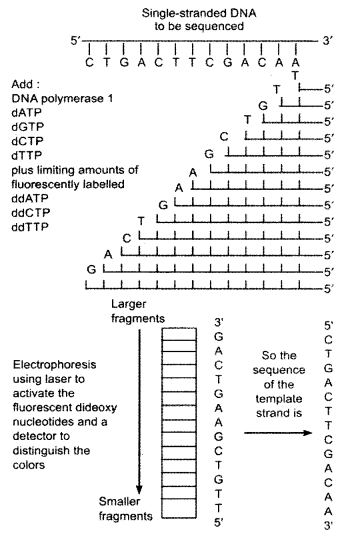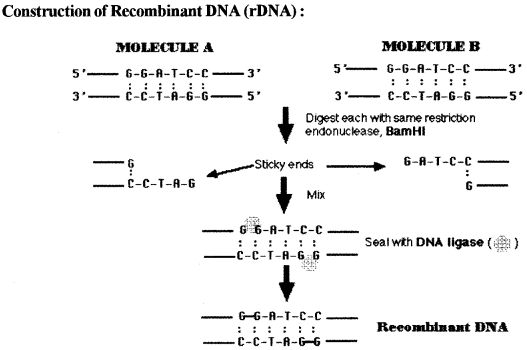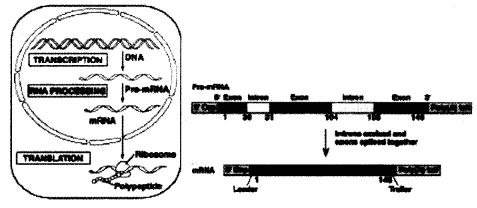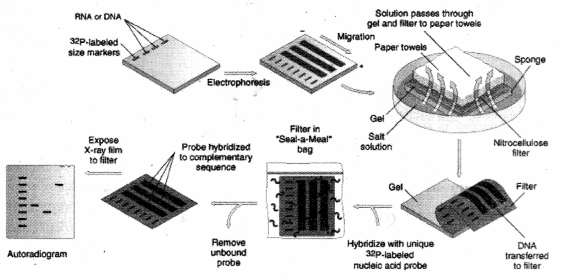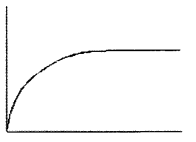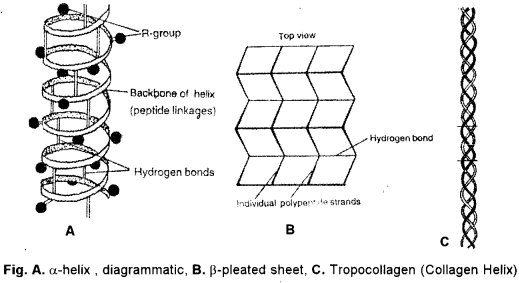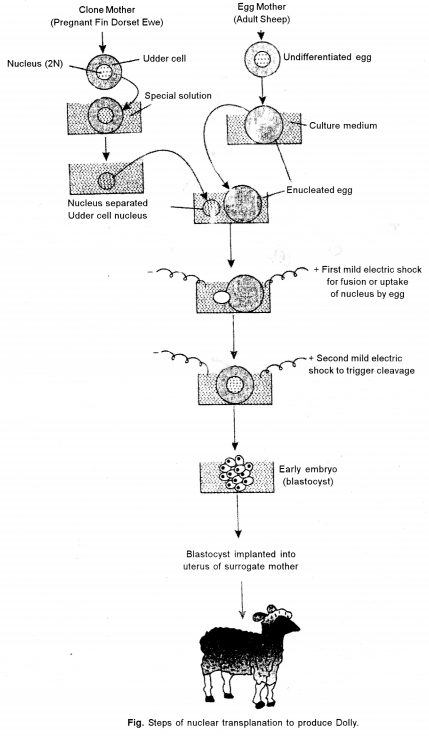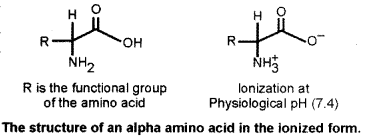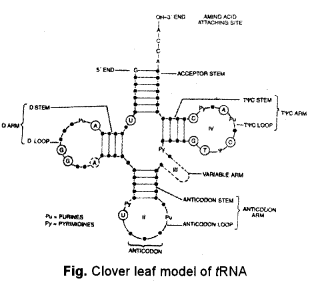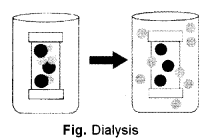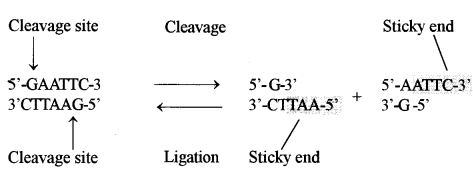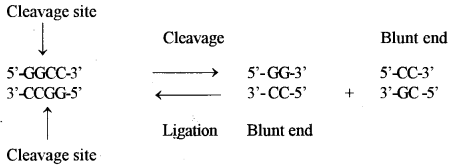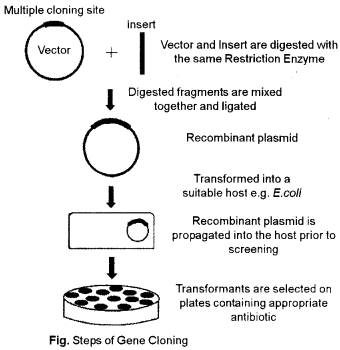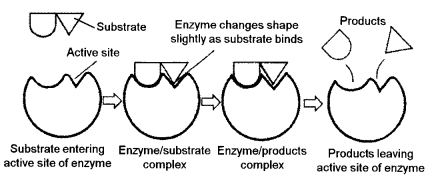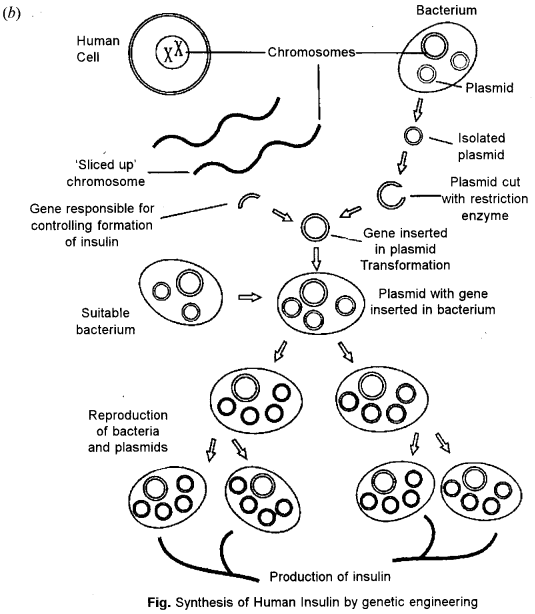ISC Commerce Previous Year Question Paper 2019 Solved for Class 12
Maximum Marks: 80
Time allowed: Three hours
- Candidates are allowed additional 15 minutes for only reading the paper. They must NOT start writing during this time.
- Answer Question 1 (Compulsory) from Part I and five questions from Part II, choosing two questions from Section A, two questions from Section B and one question from either Section A or Section B.
- The intended marks for questions or parts of questions are given in brackets [ ].
- Transactions should be recorded in the answer book.
- All calculations should be shown clearly.
- All working, including rough work, should be done on the same page as, and adjacent to the rest of the answer.
Part – I (20 Marks)
Answer all questions.
Question 1. [10 × 2]
Answer briefly each of the questions (i) to (x) :
(i) What is meant by the term Business Environment ?
(ii) State any four short-term sources of finance for a Joint Stock Company.
(iii) Mention any two advantages of e-Banking to the customers.
(iv) Differentiate between Fixed Capital and Working Capital.
(v) “Management is universal’. Comment.
(vi) State any two points of difference between recruitment and selection.
(vii) Explain feedback as a part of the process of communication.
(viii) Mention any two facilitating functions of marketing.
(ix) Name two types of markets on the basis of nature of transactions.
(x) Mr. Kappa has recently purchased a refrigerator from TUTU Enterprises, paying ₹ 30.000 After using it for a day or two, he found mechanical defects in the refrigerator. Immediately, he informed the dealer about the defect but there was no response from the dealer. Mr. Kappa decided to lodge a complaint against TUTU Enterprises.
(a) Which court should Mr. Kappa approach to file a complaint ?
(b) State any one relief the concerned court may order in favour of Mr. Kappa.
Answer:
(i) The business environment is a mixture of complex, dynamic and uncontrollable external factors within which a business is to be operated.
(ii) Short term sources for a Joint Stock company are :
- Public Deposits
- Trade Credits
- Customer Advances
- Factoring
(iii) e-Banking services have the following advantages :
- Customer can do transactions 24 × 7 basis.
- e-Banking transactions are online and almost instantaneous.
- Customer can do transactions from anywhere: from his home or workplace using a computer or laptop or mobile, he has no need to visit his bank branch.
(iv)
| Fixed Capital | Working Capital |
| 1. Fixed capital means the investments done by the business for acquiring long term benefits. | 1. Working capital means the funds required for day to day operations of the business. |
| 2. It is used to acquire non-current assets of the business. | 2. It is used to acquire current assets of the business. |
| 3. This capital cannot be converted into cash immediately. | 3. This capital can be converted into cash immediately. |
(v) Management is universal in the sense that it is a common and essential element in all enterprises. Management is universal in the following sense :
- First, managerial skills are transferable from one person to another.
- Secondly, management skills can be transferred from one organization to another.
- Thirdly, managerial skills can be imported and exported from one country to another.
(vi)
| Recruitment | Selection |
| 1. Recruitment is an activity of searching candidates and encouraging them apply for it. | 1. Selection refers to the process of selecting the best candidates and offering them job. |
| 2. Inviting more and more candidates to apply for the vacant post. | 2. Picking up the most suitable candidate and rejecting the rest. |
(vii) The observation of the receiver ‘s response is called feedback. It enables the sender to evaluate the effectiveness of the message. Without feedback, two way communications is either ineffective or incomplete. Feedback is the only way to gain receiver’s response and depending on the feedback, sender can take further steps.
(viii) Facilitating functions of marketing are :
- Standardization and grading
- Financing
- Risk taking
(ix) Types of markets on the basis of transactions are :
- Spot markets
- Future markets
(x) (i) District Consumer Forum
(ii) Replacement of product
Part – II (60 Marks)
Answer any five questions
Question 2.
(a) Explain three important characteristics of Management. [3]
(h) Briefly explain any four external factors of Micro environment of business. [4]
(c) What is meant by barriers to communication ? Explain three suitable measures the barriers to effective communication. [5]
Answer:
(a) Management is goal oriented process : Management always aims at achieving the organizational objectives. The functions and activities of manager lead to the achievement of organizational objectives.
Management is Pervasive : Management is a universal phenomenon. The use of management is not only restricted to business firms only but also it is applicable in profit¬making, non-profit-making, business or non-business organizations: even a hospital, school, club and house has to be managed properly.
Management is a continuous process : Management is a continuous process. All the functions of management are performed continuously, for example, planning organizing; staffing, directing and controlling are performed by all the managers all the time.
(b) Four external factors of micro environment of a business are :
- Suppliers : Without a supplier, it is not possible to carry on the business.
- Customers : Customers are another basic requirement to run a business. If no one is buying the products of your business, you will have to close its doors.
- Marketing Intermediaries: Middlemen have a direct impact on your business operation. They could be your distributors, wholesalers and other related people.
- Financiers : Typically, business owners take out a loan to get started and the growth of the business depends upon their ability to obtain additional loans.
(c) There may be many barriers in the process of communication. The intended communication is often disturbed and distorted leading to a condition of misunderstanding and failure of communication. The barriers to effective communication could be of many types like linguistic. psychological, emotional, physical and cultural etc.
Measures to overcome the barriers to effective communication :
Use of Simple Language : Use of simple and clear words should be emphasized. Use of ambiguous words and jargons should be avoided.
Reduction and elimination of noise levels : Noise is the main communication barrier which must be overcome on priority basis. It is essential to identify the source of noise and then eliminate that source.
Active Listening: Listen attentively and carefully. There is a difference between listening and hearing. Active listening means hearing with proper understanding of the message that is heard. By asking questions the speaker can ensure whether his/her message is understood or not by the receiver in the same terms as intended by the speaker.
Question 3.
(a) Give three differences between Shares and Debentures. [3]
(b) What is meant by supervision ? Explain three functions of a Supervisor. [4]
(c) Explain the importance of Delegation of Authority. [5]
Answer:
(a)
| Shares | Debentures |
| 1. The shares are owned funds of the company. | 1. The debentures are borrowed funds of the company. |
| 2. Shares represent capital of the company. | 2. Debentures represent debt of the company. |
| 3. The holder of shares is known as shareholder. | 3. The holder of debentures is known as debenture holder. |
| 4. Shareholders get the dividend. | 4. Debenture holders get the interest. |
(b) Supervision is defined as guiding the activities of people w’m perform the work. It includes planning, organizing, directing and controlling the work and the activities of subordinates or employees.
Functions of a supervisor :
Planning and Organizing: Basic role of a supervisor is to plan the daily work schedule of the workers by guiding them the nature of their work and also dividing the work amongst the workers according to their interests, aptitudes, skills and interests.
Leadership and Guidance : A supervisor is the leader of workers working under him. He leads the workers and influences them to work their best. He also guides the workers by fixing production targets and by providing them instructions and guidelines to achieve those targets.
Motivation : A supervisor plays an important role by providing different incentives to workers to perform better. There are different inonetan and non-monetan incentives which can inspire the workers to work better and produce better.
(c) Delegation of authority means division of authority and powers downwards to the subordinate. Delegation is about entrusting someone else to do parts of your job. Delegation of authority can be defined as subdiv ision and sub-allocation of powers to the subordinates in order to achieve effective results.
Effective management: A manager passes routine work to his subordinates. He is free to concentrate on other important matters. The main job of a manager is to get the work done effectively. By delegating the authorities and responsibilities managers can get the work done effectively and efficiently from the subordinates.
Employees’ Development: As a result of delegation employees get more opportunities to utilize their talents. It allows them to develop those skills which help them to perform complex task. Delegation helps in making better future managers by giving them chance to use their skills, gain experience of work related to higher job position.
Motivation of employees: When the manager is sharing his responsibilities and authority with the subordinates it motivates the subordinates as they develop the feeling of belongingness and trust which is shown to them by their superiors. Some employees can be motivated by such kind of non-financial incentives.
Facilitates organizational growth : When the managers are passing their responsibility and authority to the subordinates they keep in mind the qualification and capability of all the subordinates. This leads to division of work and specialization which is very important for organizational growth.
Question 4.
(a) Explain any three disadvantages of issuing equity shares, from the Company s point of view.
(b) What is meant bv NEFT ? Give any two features of NEFT. [4|
(c) Explain five factors that should be taken into consideration while determining the price of a product or service.
Answer:
(a) 1. If only equity shares are issued, the company cannot take the advantage of trading on equity.
2. As equity’ capital cannot be redeemed, there is a danger of over capitalization.
3. Equity’ shareholders can put obstacles for management by manipulation and organizing themselves.
(b) NEFT stands for National Electronic Funds Transfer. This facility is provided by commercial banks to the persons requesting for sending funds from one branch of the bank to another branch of the same bank or different bank. The customer can transfer money from Rupee one to any limit at very’ nominal charges. These charges are much lesser than sending the funds through a draft.
(c) Cost of Production : Cost of production/service is the main component of price. No company can sell its product or sen ices at less than the cost of production. Before price fixation, it is necessary to compile data relating to the cost of production and keep that in mind.
Demand for Product: Intensiv e study of demand for product and sen ices in the market be undertaken before price fixation. If demand is relatively more than supply , higher price can be fixed.
Price of Competing Firms: It is necessary to take into consideration prices of the products of the competing firms before fixing the price. In case of cut-throat competition prices are required to be kept low.
Question 5.
(a) Explain any three objectives of Marketing. [ 3 ]
(b) What are Public Deposits ? Briefly explain any two merits of Public Deposits. [4 ]
(c) What is financial planning ? Explain three points of importance of financial planning for a business organisation. [ 5 ]Answer:
(a) Objectives of marketing are :
Creation of Demand : The first objective of marketing is to create demand through various means. An attempt is made to find out the preferences and tastes of the consumers. Goods and services are produced to satisfy the needs of the customers. Demand is also created by informing the customers the utility of various goods and serv ices.
Customer Satisfaction : The marketing manager must study the demands of customers before offering them any goods or services. Selling the goods or services is not that important as the satisfaction of the customers’ needs. Modern marketing is customer- oriented. It begins and ends with the customer.
Generation of profits : Marketing also targets at profits. If the firm is not earning profits, it will not be able to survive in the market. Moreover, profits are also needed for the growth and diversification of the firm.
(b) Public deposits refer to the unsecured deposits invited by companies from the public mainly to finance working capital needs. A company can invite public deposits for a period of six months to three years. Therefore, public deposits are primarily a source of short-term finance. However, the deposits can be renewed from time-to-time. Renewal facility enables companies to use public deposits as medium-term finance.
Merits of public deposits are :
Simplicity: Public deposits are a very convenient source of business finance. The company raising deposits has to simply give an advertisement and issue a receipt to each depositor
Economical: Interest paid on public deposits is lower than that paid on debentures and bank loans. Moreover, no underwriting commission, brokerage, etc. has to be paid. Interest paid on public deposits is tax deductible which reduces tax liability. Therefore, public deposits are a cheaper source of finance. .
(c) Financial planning helps you determine your short and long-term financial goals and create a
balanced plan to meet those goals.
Importance of financial planning :
- Financial planning provides policies and procedures for the sound administration of the finance function.
- Financial planning results in preparation of plans for the future. Thus, new projects could be undertaken smoothly.
- Financial planning ensures required funds from various sources for the smooth conduct of business.
Question 6.
(a) Explain any three points of importance of Planning. [3]
(b) Discuss any four features of Objectives, as a type of a Plan. [4]
(c) Explain the various steps involved in the process of Controlling, as a function of Management. [5]
Answer :
(a) Importance of planning :
Increases efficiency: Planning makes optimum utilization of all available resources. It helps to reduce wastage of valuable resources and avoids their duplication. It aims to give the highest returns at the lowest possible cost. Therefore, it increases the overall efficiency.
Reduces business-related risks: There are many risks involved in a business. Planning helps to forecast these business-related risks. It also helps to take the necessary precautions to avoid these risks and prepare for future uncertainties in advance. Therefore, it reduces business risks.
Facilitates proper coordination : The plans of all departments of an organization are well coordinated with each other. Similarly, the short-term, medium-term and long-term plans of an organization are also coordinated with each other. Such proper coordination is possible only because of efficient planning.
(b) Objectives should be framed for a single activity in mind. They should be result oriented. Objectives should not be v ague and they should be quantitative and measurable. Objectives must be achievable. They should not be unrealistic.
(c) Establishment of standards: Standards are benchmarks. Through standards, we can compare output to standardization. It serves the purpose of being a threshold which has to be achieved or surpassed. The creation and the prior establishment of standards is the first step involved in the process of controlling. The standards are established in accordance to the plan that is developed for the entire organization.
Ascertainment of output : The second main step in controlling is the measurement of performance. Gauging deviations from the planned measures is easier for measurable standards of performance as they can be quantified in units, cost, money terms, etc. However, non- measurable standards of performance are difficult to locate.
Identification of deviations : After the actual output is determined, it is compared and contrasted to the established standards. This step is central to the entire process of controlling as the deviations from the plan is identified during this step. Deviations can be referred to all those factors present in the actual output that prove distinct and different from the established standard.
Question 7.
(a) Distinguish between advertising and sales promotion. [3]
(b) Explain any four rights available to a consumer under the Consumer Protection Act. 1986. [4]
(c) What is meant by promotion mix ‘? Briefly explain the elements of promotion mix. [5]
Answer:
(a)
| Advertising | Sales Promotion |
| Advertising is a technique of driving public attention towards a product or service. through paid network. | The set of activities that spread a word about the product, brand or service is known as promotion. |
| Building brand image and boosting sales. | Short term sales push. |
| Advertising is highly expensive. | Cost effective. |
(b) Rights of consumers are :
Right to Safety : The Consumer Protection Act 1986 defines this right as a protection against goods and services that are hazardous to life and property. This particularly applies to medicines, pharmaceuticals, foodstuffs and automobiles. The right requires all such products of critical nature to life and property to be carefully tested and validated before being marketed to the consumer.
Right to Information : This right mentions the need for consumers to be informed about the quality and quantity of goods being sold. They must be informed about the price of the product and have access to other information specific to the product that they wish to consume.
Right to Choose: The consumer must have the right to choose between different products at competitive prices. This av oids monopoly in the market.
Right to Seek Redressal : When a consumer feels exploited, he/she has the right to approach a consumer court to file a complaint. A consumer court is a forum that hears the complaint and provides justice to the party that has been hurt. Thus, if the consumer feels he/she has been exploited, they can approach the court using this right.
(c) Promotion mix refers to the composure of several promotional tools used by the business to create, maintain and increase the demand for goods and services.
Elements of promotion mix :
Personal selling : It is a part of the promotional mix which involv es a one to one communication between buyers and customers (either potential or already customers). As it is a one-to-one communication, it generates direct contact with prospects and customers. Even though it is considered to be one of the most expensive forms of promotion, it is also considered to be the most successful as a seller-buy er relationship can be created and developed.
Advertising: One of the key factors in the promotional mix. which contributes to brand building and also how the market perceives the company, is advertising. It is always a big part of the promotional mix because of the far and wide reach of advertising and the message that you can send to your existing and potential customers. Good adv ertising can build a solid brand for the company. On the other hand, bad advertising with a wrong message, can cause the brand or product to fail.
Direct marketing: While advertising targets a mass-audience, direct marketing targets prospects and customers. Social media marketing, Email marketing, Internet marketing are all types of direct marketing used by companies. They have become important in the promotional mix lately because people are using internet far more than they used to a decade back. Companies employ direct marketing in order to engage in one-way communication with their customers, about product announcements, special promotions order confirmations as well as customer inquiries.
Sales promotions : Sales promotions are one of the most common types of promotion used by companies. Their main purpose is to stimulate purchasing and sales. While it has the potential of increasing sales, it is also beneficial for informing prospects about new products on the market or just to recapture old or lost customers. Such examples include: coupons, product samples, etc.
Question 8.
(a) Explain three features of goods, as an element of Product Mix. [3]
(b) Discuss any four types of preference shares. [4]
(c) State and explain the principles of management as laid down by F. W. Taylor. [5]
Answer:
(a) Features of Goods as an element of product mix
- Goods are one of the elements of marketing mix or program.
- Marketer can actualize its goals by producing, selling, improving and modifying the goods.
- Goods include tangible and non-tangible features or benefits.
- Goods are the medium to offer benefits and satisfaction to consumers.
(b) Types of preference shares :
Callable : The issuing company has the right to buy back these shares at a certain price on a certain date. Since the call option tends to cap the maximum price to which a preference share can appreciate (before the company buys it back), it tends to restrict stock price appreciation. Convertible : The owner of these preference shares has the option, but not the obligation, to convert the shares to a company’s common stock at some conversion ratio. This is a valuable feature w hen the market price of the common stock increases substantially, since the owners of preference shares can realize substantial gains by converting their shares.
Cumulative : If a company does not have the financial resources to pay a dividend to the owners of its preference shares, then it still has the payment liability’ and cannot pay dividends to its common shareholders for as long as that liability’ remains unpaid.
Non-cumulative : If a company does not pay a scheduled dividend, it does not have the obligation to pay the dividend at a later date. This clause is rarely used.
(c) Science, Not Rule of Thumb : In order to increase organizational efficiency, the Rule of Thumb’ method should be substituted by the methods developed through scientific analysis of work.
Rule of Thumb means decisions taken by manager as per their personal judgement’s. According to Taylor, even a small production activity can be scientifically planned. This will help in saving time as well as human energy. Decisions should be based on scientific enquiry with cause and effect relationships.
Harmony, Not Discord : Taylor emphasized that there should be complete harmony between the workers and the management since if there is any conflict between the two; it will not be beneficial either for the workers or the management Both the management and the workers should realize the importance of each other. In order to achieve this state, Taylor suggested complete mental revolution on the part of both management and workers.
It means that there should be complete change in the attitude and outlook of workers and management towards each other. It should always be kept in mind that prosperity for an employer cannot exist for a long time unless it is accompanied by the prosperity of the employees of that organization and vice versa.
Mental Revolution: The technique of Mental Revolution involves a change in the attitude of workers and management towards each other. Both should realize the importance of each other and should work with full cooperation. Management as well as the workers should aim to increase the profits of the organization.
Cooperation, Not Individualism : This principle is an extension of principle of “Harmony, not discord’ and lays stress on mutual cooperation between workers and the management. Cooperation, mutual confidence, sense of goodwill should prevail among both, managers as well as workers. The intention is to replace internal competition with cooperation.
Question 9.
Write short notes on the following :
(a) E.S.O.R [4]
(b) Features of Management as an art. [4]
(c) Channels of distribution [4]
Answer:
(a) ESOP (Employee stock ownership plan) refers to an employee benefit plan which offers employees an ownership interest in the organization. Employee stock ownership plans arc issued as direct stock, profit-sharing plans or bonuses and the employer has the sole discretion in deciding who could avail of these options.
However, Employee stock ownership plans are just options that could be purchased at a specified price before the exercise date. There are defined rules and regulations laid out in the Companies Rules which employers need to follow for granting of Employee stock ownership plans to their employees.
(b) Art implies application of know ledge and skill to trying about desired results. An art may be defined as personalized application of general theoretical principles for achieving best possible results. Art has the following characters :
Practical Knowledge : Every art requires practical knowledge therefore learning of theory is not sufficient. It is very important to know practical application of theoretical principles.
Personal Skill: Although theoretical base may be same for every artist, but each one has his own sty le and approach towards his job. That is why the level of success and quality of performance differs from one person to another.
Similarly management as an art is also personalized. Every manager has his own way of managing things based on his knowledge, experience and personality that is why some managers are known as good managers.
Creativity: Every artist has an element of creativity in line. That is why he aims at producing something that has never existed before which requires combination of intelligence and imagination. Management is also creative in nature like any other art. It combines human and non-human resources in useful way so as to achieve desired results. It tries to produce sw eet music by combining chords in an efficient manner.
Perfection through practice : Practice makes a man perfect. Every artist becomes more and more proficient through constant practice. Similarly managers learn through an art of trial and error initially but application of management principles over the years makes them perfect in the job of managing.
Result-Oriented : Even art is result oriented as it seeks to achieve concrete results. In the same manner, management is also directed towards accomplishment of pre-determined goals. Managers use various resources like men. money, material, machinery’ and methods to promote growth of an organization.
(c) Direct Channels : When the producer or the manufacturer directly sells the goods to the customers without involving any middlemen, it is known as direct channel. It is the simplest and the shortest mode of distribution. Selling through Indian Post. Internet or door to door selling etc. are the examples of this channel.
Methods of Direct Channel are :
- Door to door selling
- Internet selling
- Mail order selling
- Company owned retail outlets
- Telemarketing
Indirect Channels: When a manufacturer or a producer employs one or more middlemen to distribute goods, it is known as indirect channel.
Following are the main forms of indirect channels :
Manufacturer-Retailer-Consumer : This channel involves the use of one middleman i.e. retailer who in turn sells them to the ultimate customers. It is usually adopted for specialty goods. For example Tata sells its cars through company approved retailers.
Manufacturer-Wholesaler-Retailer-Customer : Under this channel, wholesaler and retailer act as a link between the manufacturer and the customer. This is the most commonly used channel for distributing goods like soap, rice, wheat, clothes etc.
Manufacturer-Agent-Wholesaler-Retailer-Consumer : This level comprises of three levels; middlemen (agent), wholesaler and the retailer. The manufacturers supply the goods to their agents w ho in turn supply them to wholesalers and retailers. This level is usually used when a manufacturer deals in limited products and even then wants to cover a wide market.
